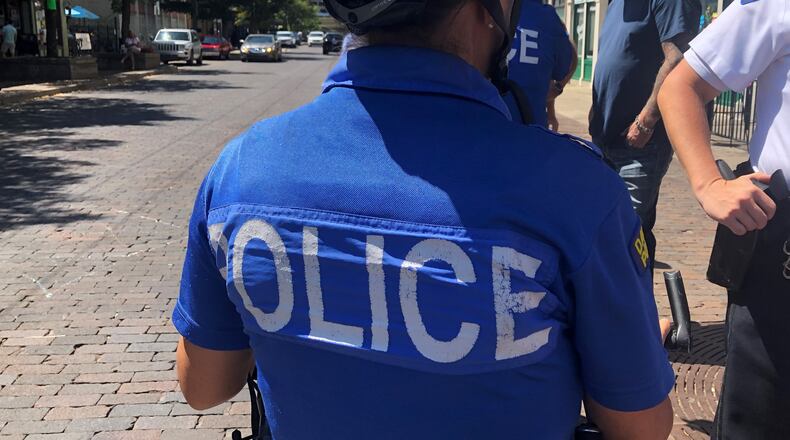“Part of this is to benchmark where we are now, start to use de-escalation tactics and hopefully over time we’ll see a reduction in use-of-force,” Fairchild said.
The five Dayton police reform committees have met regularly for months and have developed and approved a combined 43 recommendations, with more expected in coming days and months.
A different reform committee last month recommended that the police department make unholstering a firearm and pointing it at a citizen a reportable show of force.
Earlier this month, the Dayton police reform working group focused on training approved its first batch of recommendations that were sent to the Dayton City Commission for consideration.
The group recommended the police department update its use-of-force policy to state de-escalation is a desired outcome and define de-escalation tactics and the circumstances in which they are safe and inappropriate for officers to use.
The Dayton Police Department’s current de-escalation training focuses mostly on interactions with citizens struggling with mental health issues, said Stacy Benson-Taylor, co-lead of the training reform committee.
The reform group wants a policy that covers everyone in the community, regardless of cultural differences, race, gender, ability, sexual orientation and background, she said.
De-escalation is a broad term that can include using communication and making decisions that decrease the likelihood of conflict, confrontation and physical harm, officials say.
The group has called for annual refresher courses, new ways to track and evaluate how police use de-escalation techniques and annual public reports and monthly inspections with data and information.
“Our training is not just academy training ― it’s in-the-field training, it’s officer training, it’s remedial training and updates,” Benson-Taylor said. “We are also looking at ways to refresh these tactics with every stop. ... If you just have one training, and if you are not using it on a regular basis, it just goes away.”
Research and studies about de-escalation strategies are very limited, but some criminal justice experts say the first key step is to have a strong policy and then develop training from that, Benson-Taylor said.
Police are taught skills to get citizens to comply voluntarily, but de-escalation wasn’t really defined nor was it really part of the police department’s nomenclature and formal policy, and police training generally calls for meeting force with force, said Commissioner Fairchild.
The new recommendations make de-escalation a major objective of the department’s use-of-force policy, which hopefully will guide officers to make decisions that result in less confrontation, Fairchild said.
“By being formalized, it will tighten those expectations and should make officer responses more consistent than they already are,” said Dayton police Lt. Matt Dickey, commander of the Dayton police academy and training bureau, who is a member of the training committee.
Fairchild said the best way to avoid force is to slow things down so officers do not have to make split-second decisions, using time, distance, spacing and shielding to try to defuse conflict and tense situations, increasing the likelihood of voluntary compliance.
“As part of your decision-making, as you are trying to interact with a citizen, what steps can you take to prevent it from escalating up?” he said.
Fairchild said the recommendations were approved through consensus, with no objections, even though the training committee is a diverse group of community members that includes community activists, police, public defenders, faith leaders and other citizens.
The police department is still reviewing the recommendations, but their main points appear “workable,” Dickey said.
Julie Peppo, a member of the training committee and a Montgomery County assistant public defender, said the group is trying to create an environment in which police use better techniques to work with citizens to help understand their sides and explain the situation.
“Often my clients tell me that when the police come, they are not trying to understand both sides of the situation, and they are not given enough information or an opportunity to explain their position,” she said. “And often my clients tell me they called the police to help them mediate a situation, and they were just arrested.”
About the Author


